How ABA Therapy Helps Children with Autism Manage Anger
August 1, 2025
Effective Strategies in Managing Autism-Related Anger

Understanding the Role of ABA Therapy in Emotional Control
Autism spectrum disorder (ASD) presents unique challenges in emotional regulation, particularly concerning anger and aggression. Applied Behavior Analysis (ABA) has emerged as a leading evidence-based intervention that supports children with autism in managing these emotional outbursts, ultimately fostering better social interaction, communication, and self-control.
Foundations of ABA Therapy in Addressing Anger
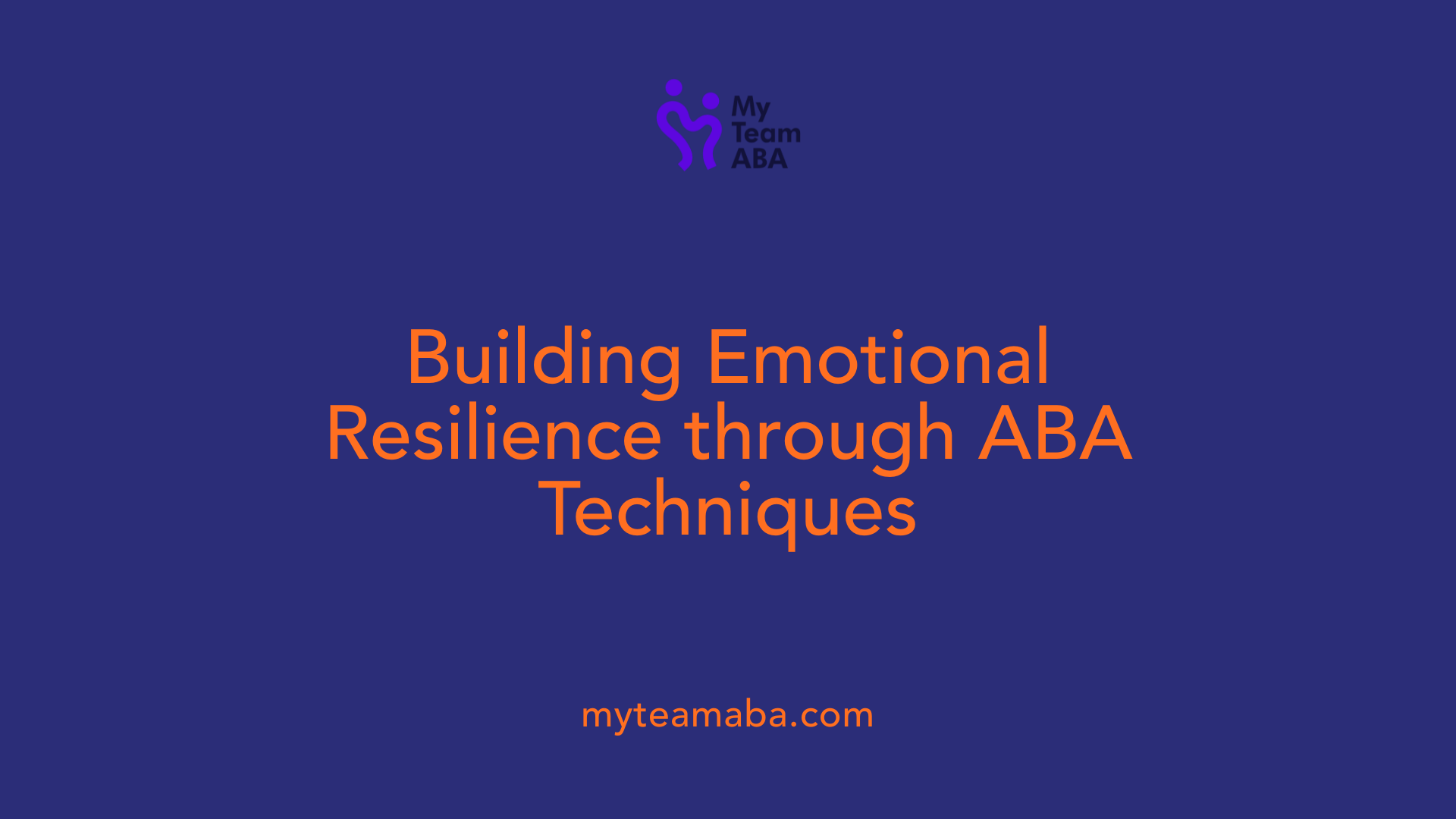
How does ABA therapy help children with autism manage anger and aggressive behaviors?
Applied Behavioral Analysis (ABA) therapy plays a vital role in helping children on the autism spectrum manage their anger and reduce aggressive behaviors. This approach begins with a thorough behavioral assessment, including functional analysis, to identify the triggers and consequences that reinforce anger or meltdowns.
Once the analysis is complete, a customized Behavior Intervention Plan (BIP) is developed. This plan targets specific behaviors like anger, focusing on understanding and altering the triggers and rewards that maintain these responses.
ABA techniques primarily use operant conditioning—rewarding positive and appropriate behaviors while redirecting or replacing anger-fueled actions with neutral or socially acceptable responses. For instance, children may be taught alternative ways to express frustration or requests through modeling, visual cues, and teaching patience.
Data collection and ongoing analysis are integral to ABA, allowing professionals to track progress and adapt interventions as needed. This continuous process ensures that strategies remain effective and tailor-made to each child's needs.
Evidence supports that ABA therapy significantly improves anger management skills in children with autism. It not only reduces the frequency and intensity of aggressive episodes but also promotes better emotional regulation. Moreover, by enhancing communication and social skills, ABA helps children express their needs more effectively, decreasing the frustration that often triggers anger.
In addition to external behavioral strategies, ABA incorporates prompting self-awareness techniques. Children learn to recognize their own triggers and apply calming strategies—such as deep breathing or visualization—independently. This internal reinforcement is crucial for long-term anger management.
The overall goal of ABA therapy in this context is to foster emotional regulation and reduce aggressive behaviors. It supports children in developing healthier responses to emotional challenges, ultimately improving their social interactions and quality of life.
Techniques and Strategies Used in ABA for Emotional Regulation
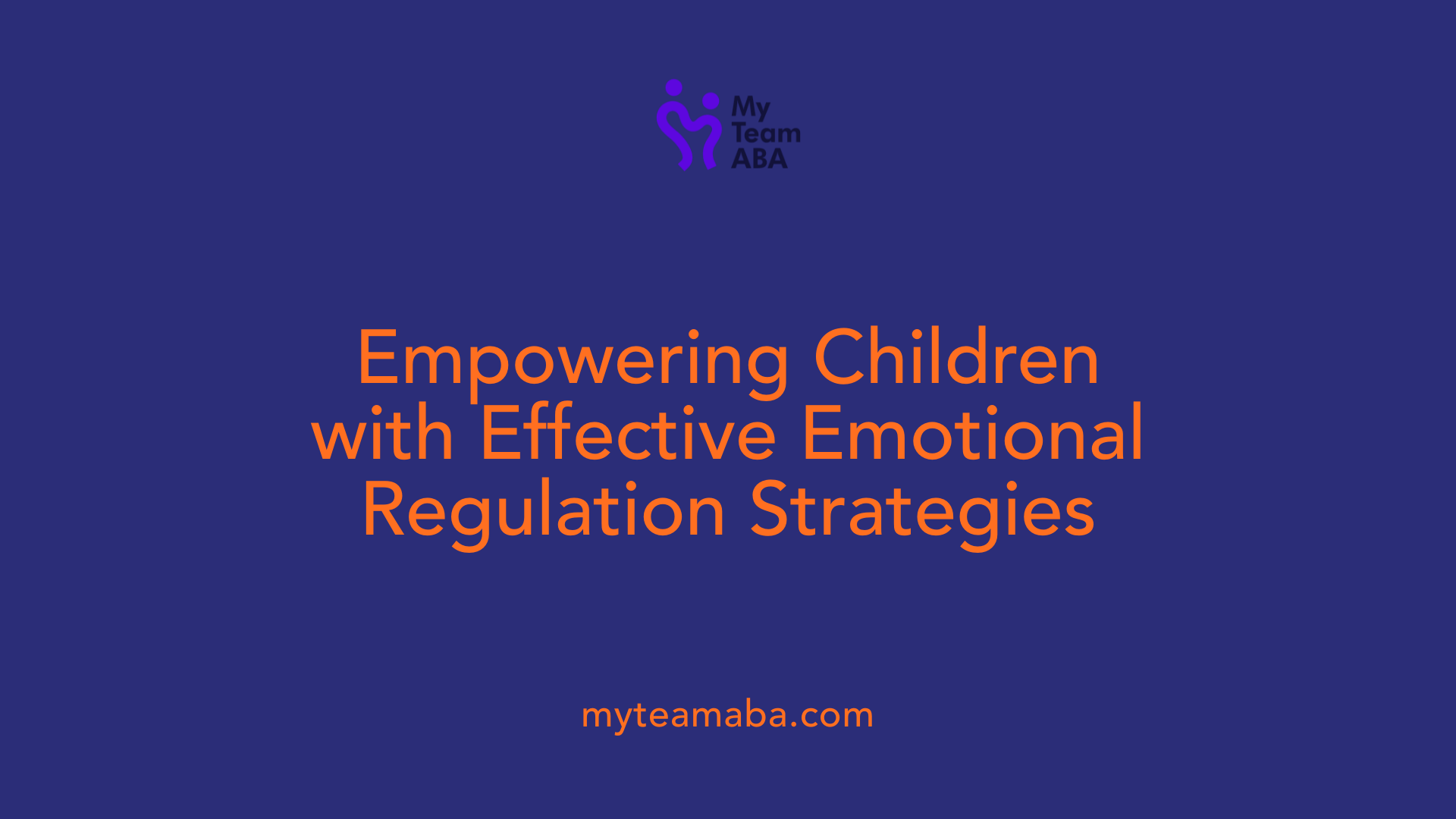
What techniques does ABA therapy use to improve emotional regulation in children with autism?
ABA therapy employs a variety of methods to help children manage their emotions more effectively. Central to this approach are functional behavior assessments, which analyze behaviors like anger or meltdowns to determine their triggers and reasons.
Based on these assessments, a personalized Behavior Intervention Plan (BIP) is created. This plan aims to address specific behaviors, including anger, by designing strategies tailored to the child's needs.
Data collection plays a vital role in ABA. Therapists continuously track behavior patterns to see what works and what needs adjusting. This ongoing analysis ensures interventions stay effective over time.
A core principle of ABA is positive reinforcement. Children receive rewards—such as praise or preferred activities—when they demonstrate coping skills or appropriate behaviors. This encourages them to use better ways to handle emotions.
ABA therapists also use operant conditioning techniques. For example, if a child becomes angry, a therapist might redirect their attention to a calming activity or teach alternative ways to express themselves, like using words or gestures.
Visual supports are frequently used to help children understand expectations and manage their responses. Tools like visual cues, timers, and hand signals signal when certain behaviors are undesirable and guide children to wait patiently or stay calm.
Role-playing and modeling are additional methods. Children practice social scenarios through role-playing to learn suitable reactions. Modeling appropriate behaviors helps children imitate positive responses in real life.
Although ABA does not directly address internal feelings, it emphasizes external behaviors, helping children recognize, control, and gradually reduce tantrums or aggression. Combining ABA with other therapies like CBT can further support emotional awareness.
Through these strategies, ABA aims to equip children with the skills necessary for emotional regulation, reducing impulsive reactions and encouraging better social interactions. This supportive environment helps children develop resilience and independence in managing their feelings.
Understanding Aggression and Triggers in Children with Autism
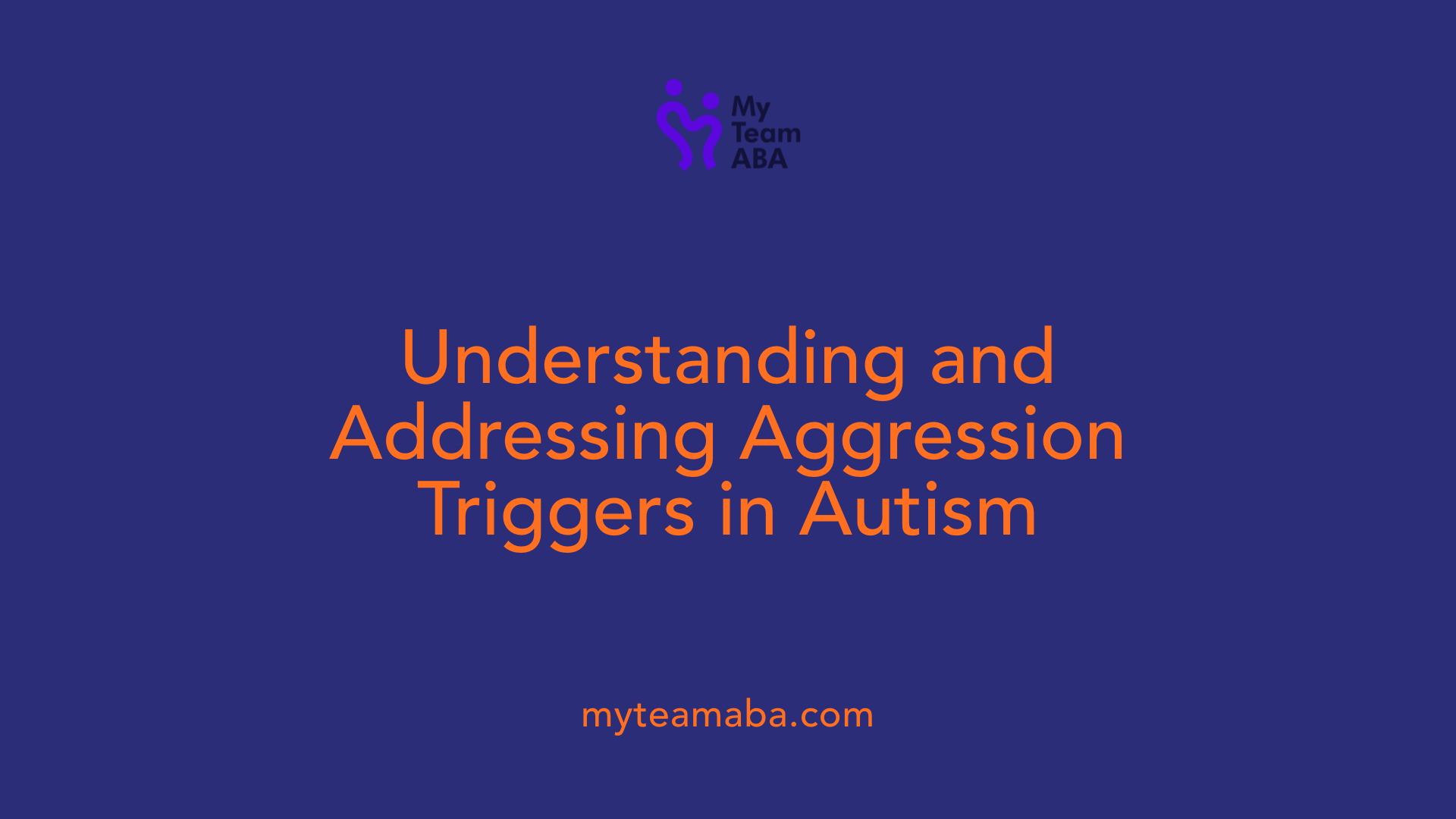
What are common aggressive behaviors in children with autism?
Children with autism often display behaviors such as hitting, property destruction, and meltdowns. These actions are often a form of communication or a reaction to overwhelming situations.
Meltdowns, in particular, are intense emotional episodes where the child might lash out or become non-responsive. Such behaviors can be distressing for both the child and their caregivers, but understanding their origins is crucial for effective intervention.
What triggers aggressive behaviors?
Various factors can lead to aggression in children with autism. Common triggers include overstimulation from loud noises or crowded environments, communication difficulties that make expressing needs frustrating, and unpredictable routine changes that unsettle the child.
Stress and sensory overload often play significant roles. When children cannot process or communicate their feelings effectively, they may react aggressively as a way to cope or seek attention.
Factors contributing to aggression
Several underlying aspects contribute to aggressive behavior in children on the autism spectrum. Anxiety and mood disturbances can heighten emotional reactivity. Sleep issues or biological brain differences, such as lower brain stem volume, may also influence aggression.
Also, difficulties in understanding social cues and subtleties can cause frustration, leading children to lash out or act impulsively. Notably, aggression is not a sign of malice but often a manifestation of their challenges in emotion regulation.
How does ABA therapy help children with autism manage anger and aggressive behaviors?
Applied Behavioral Analysis (ABA) provides structured support to reduce aggression by identifying the triggers behind these behaviors. Through assessment and functional analysis, ABA therapists develop personalized plans that promote positive behaviors and address underlying needs.
ABA techniques include reinforcing appropriate coping strategies, redirecting attention away from triggers, and teaching effective communication skills. Visual cues, social modeling, and proactive intervention help children navigate emotional responses more calmly.
The core of ABA’s approach involves teaching children how to analyze their own triggers and consequences. By doing so, they learn to recognize early signs of frustration and implement calming techniques, including self-regulation strategies like deep breathing or visualization.
Long-term goals focus on decreasing the frequency and intensity of aggressive behaviors while enhancing social interactions and emotional understanding. Supporting children and their families with tools and strategies ensures more positive interactions and better management of anger.
Long-Term Benefits of ABA in Emotional and Behavioral Management
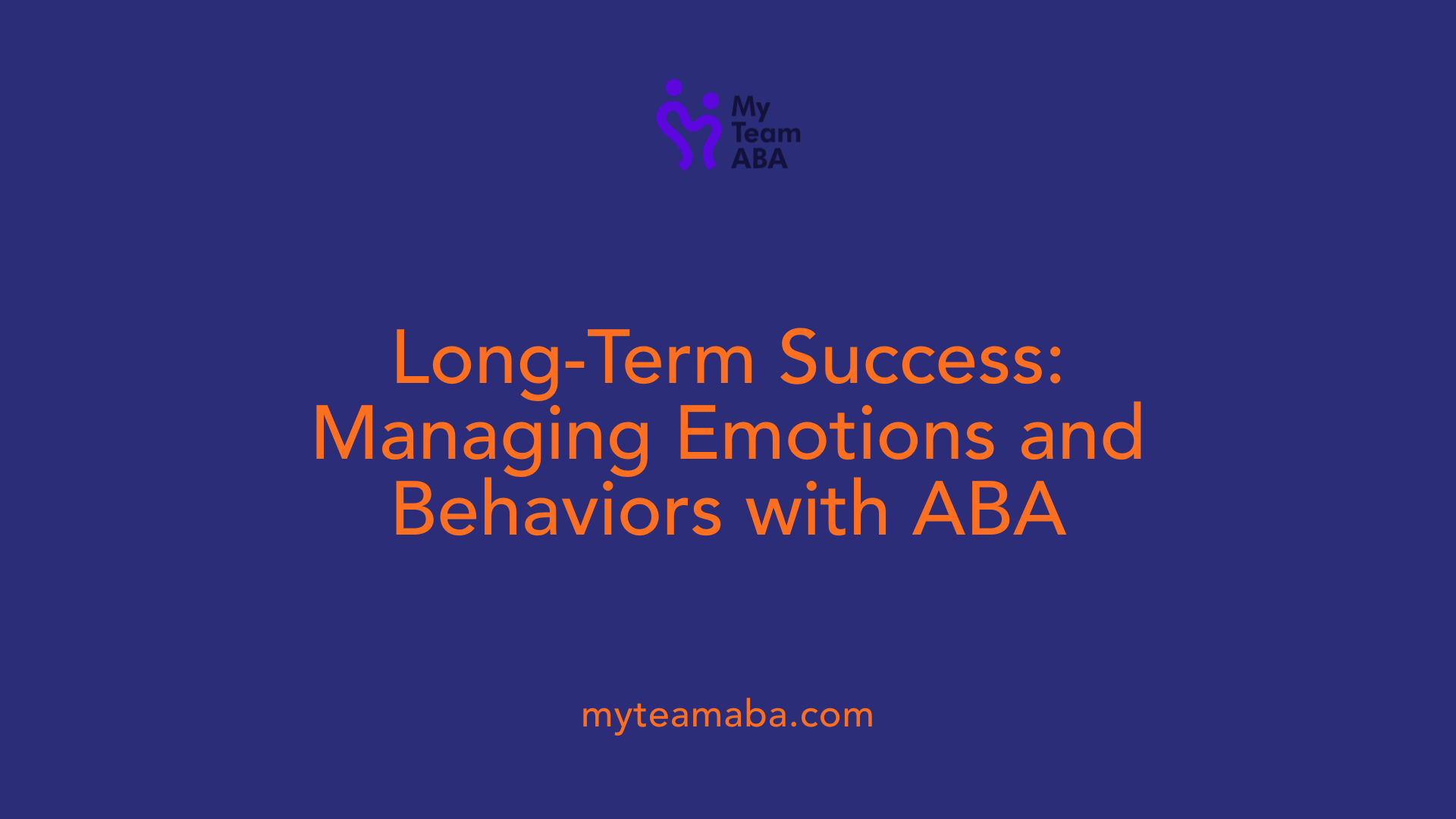
Is ABA therapy effective for anger management in children with autism?
Yes, evidence-based research indicates that ABA therapy significantly enhances anger management skills in children with autism, leading to improved emotional control.
ABA therapy works by analyzing the triggers — or antecedents — that lead to aggressive behaviors and adjusting reinforcement strategies to promote better responses. Through assessment and tailored intervention plans, children learn to replace anger with more appropriate behaviors.
Over time, children develop vital social and communication skills that reduce frustration and misunderstandings, which often trigger anger. These improvements help children express needs effectively and handle emotional situations more calmly.
Reduction in aggressive behaviors
One of the most notable benefits of ABA is a marked decrease in behaviors like hitting, property destruction, or meltdowns. By teaching alternative responses and reinforcing positive behavior, children can control impulses better. Managing triggers proactively through routines and visual cues further diminishes aggressive outbursts.
Improved communication and social skills
Enhancing communication is central to ABA efforts. Techniques such as modeling social interactions and teaching expressive language help children connect with others. As communication improves, frustration linked to misunderstandings decreases, reducing the likelihood of anger-driven reactions.
Increased self-esteem and independence
With consistent practice, children gain confidence in their abilities to manage emotions and interact socially. This increases overall independence and encourages a positive outlook, empowering them to handle challenges more effectively.
Building routines and coping strategies
Establishing structured routines and teaching coping skills like deep breathing or visual timers offers children predictable environments and calm methods for managing emotional responses. These routines help them navigate daily life with less stress, resulting in fewer anger episodes.
| Benefits | Impact | Strategies Employed |
|---|---|---|
| Reduction in aggression | Fewer tantrums and destructive behaviors | Behavior assessment, reinforcement, de-escalation techniques |
| Better communication | Less frustration, more understanding | Social modeling, language development activities |
| Self-esteem & independence | Increased confidence and autonomy | Routine building, positive feedback |
| Coping skills development | Enhanced ability to handle stress and emotions | Visual cues, calming strategies |
Overall, ABA therapy’s long-term effects extend well beyond immediate behavior changes, fostering emotional resilience and social competence. Its comprehensive approach targets the root causes of aggression and emotional dysregulation, helping children on the autism spectrum lead more balanced and fulfilling lives.
Supporting Families Through ABA Interventions
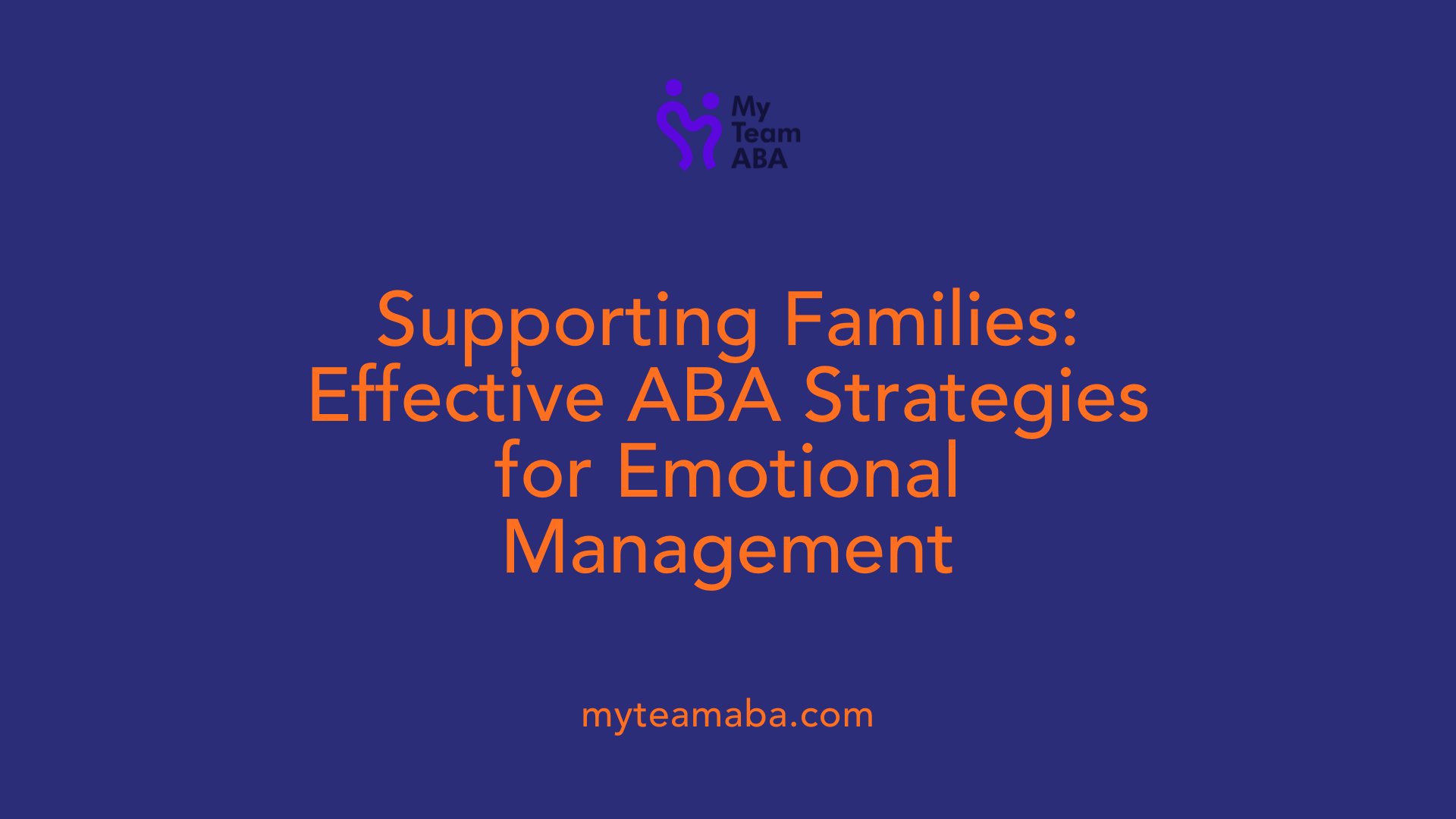
How does ABA therapy help children with autism manage anger and aggressive behaviors?
Applied Behavioral Analysis (ABA) therapy plays a vital role in helping children with autism manage anger and reduce aggressive behaviors. ABA experts start by conducting thorough assessments to identify the triggers that lead to such behaviors. These triggers can include overstimulation, communication difficulties, or routine changes. Based on these insights, a personalized Behavior Intervention Plan (BIP) is developed, focusing on modifying antecedents (triggers) and consequences (reinforcements) that maintain aggression.
ABA employs techniques such as positive reinforcement, where children are rewarded for demonstrating coping strategies or managing their emotions appropriately. For example, children are taught to redirect their attention or express their needs using socially acceptable behaviors instead of lashing out. Visual cues, timers, and hand signals are used to teach patience and self-control. Over time, these external strategies help children recognize their emotional states and respond better.
Crucially, ABA also involves teaching self-regulation skills. Children learn to analyze their own triggers and employ calming techniques like deep breathing or visualization. Caregivers and parents are trained to reinforce these strategies at home, creating a consistent environment that supports emotional regulation. While ABA focuses on observable behaviors, combining it with counseling and cognitive-behavioral techniques helps children understand and manage internal emotions, leading to decreased aggression and improved social interactions.
When to Seek Early Intervention and the Impact on Outcomes
Is ABA therapy effective for anger management in children with autism?
Evidence-based research shows that ABA (Applied Behavior Analysis) therapy is highly effective in helping children with autism better manage anger. By analyzing the triggers (antecedents) and consequences of behaviors, ABA helps develop personalized plans that teach children appropriate ways to express themselves. The approach emphasizes positive reinforcement, teaching alternative behaviors, and using visual cues, which make managing anger more achievable. As a result, many children show significant improvements in emotional control and social interactions.
Importance of early ABA intervention
Starting ABA therapy early can make a substantial difference. Early intervention allows professionals to identify triggers for anger and aggression when behaviors are still developing. This timely approach enables more effective behavior modification, reducing the severity and frequency of outbursts over time.
Long-term improvements with early start
Families that begin ABA therapy soon after diagnosis often observe enhanced communication skills, better emotional regulation, and increased independence in children. These benefits come from consistent routines, positive reinforcement strategies, and teaching coping skills. Early treatment builds a strong foundation for social participation and academic success, which are crucial for a child's overall development.
Combining ABA with other therapies like CBT
While ABA focuses on external behaviors, combining it with therapies such as Cognitive Behavioral Therapy (CBT) can address internal emotional experiences. This combination helps children recognize their triggers, understand their emotions, and apply self-management techniques like deep breathing or visualization. Together, these therapies provide a holistic approach that supports emotional growth and behavioral regulation.
| Aspect | Focus | Benefits | Additional Notes |
|---|---|---|---|
| Early Intervention | Starting ABA early | Improves emotional and behavioral outcomes | Crucial for better long-term results |
| Techniques | Reinforcement, visual cues, redirection | Teaches alternative responses | Adapted to each child's needs |
| Therapy Integration | ABA + CBT | Addresses external and internal processes | Supports comprehensive emotional health |
| Outcomes | Reduced aggression and better communication | Fosters independence and social skills | Essential for lifelong success |
Conclusion: Building Better Emotional Future with ABA
ABA therapy offers numerous benefits for children with autism, especially in managing anger and aggression. By analyzing behaviors’ triggers and consequences, ABA helps identify why children act out, which guides tailored interventions. This personalized approach ensures each child's unique needs are addressed, leading to more effective behavior modification.
Through techniques like positive reinforcement and visual cues, children are encouraged to develop coping strategies and better emotional regulation. Using operant conditioning, therapists teach alternative responses, helping children redirect their anger into socially acceptable behaviors. The focus on external behaviors, complemented by self-management strategies and cognitive-behavioral techniques, supports children in recognizing their triggers and controlling impulses.
Involving families is vital. ABA programs educate parents on recognizing triggers, managing behaviors, and reinforcing progress at home, creating a supportive environment. Early intervention is especially important, as it can significantly improve communication skills and reduce aggressive outbursts.
Overall, ABA promotes ongoing development in emotional resilience and social skills. As children learn to handle their emotions more effectively, they gain confidence and independence. This comprehensive approach equips children and their families to navigate life's challenges with greater resilience and a healthier emotional outlook.
Fostering Emotional Growth in Children with Autism
ABA therapy offers a comprehensive, evidence-based approach to help children with autism manage anger and aggression effectively. Through tailored assessments, behavioral strategies, and consistent reinforcement, ABA facilitates emotional regulation, reducing harmful behaviors and promoting social and emotional well-being. Early intervention and active family involvement further enhance outcomes, empowering children to navigate their emotions with greater confidence and resilience.
References
- Autism and Anger: Does ABA Help With Anger Issues?
- Applied Behavior Analysis in Anger Management Therapy
- ABA Therapy Tactics for Managing Aggression in Autistic Children
- Behavior Analysis and Anger Management for Children with Autism
- How ABA Therapy Can Help My Child With Aggressive Tendencies
- High-Functioning Autism and Anger - Golden Care Therapy
- Expert Q&A: How ABA therapy can help with severe behaviors
